One nice thing about UncommonGoods is that you don’t have to think too hard to get what we’re all about. In fact, it’s right there in our name—a collection of goods that are, well…uncommon. But the name also plays with the concept of the “common good,” and that’s another big part of what we’re about—the conviction that doing good in the world is also good business. Now, we’re proud to introduce the Uncommon Collection, an exclusive assortment of products that meet our highest standards for uncommon design, sustainability, and doing good. We don’t want to make this debut uncommonly complicated, so we went to our founder and CEO, Dave Bolotsky, for an inside look at this exciting new initiative.
UncommonGoods Founder & CEO Dave Bolotsky
How was the Uncommon Collection conceived and when?
It’s connected to the founding of the company itself. The ideal is really to offer the best of what we sell and put a special designation on that. From the beginning of UncommonGoods, we had a handmade symbol and we had a recycled or environmentally-friendly symbol that we would put on products on the site. I always thought that that was a good first step, and that we ought to do more because I felt that told part of the story, but not the whole story. Back then, I had seen articles written about sustainability seals and how various companies were giving a scorecard for their products, and I thought that would be a great thing for us to do. When I started looking into the complexity of that, it was extremely daunting. B Corporation—which we joined back in 2007 when it was first created—has an entire Nonprofit and Standards Committee organized around this, but as a relatively small independent business, we didn’t have the resources to do something like that. But two years ago, we started talking about it seriously again: creating the Uncommon Brand. We own the legal rights, not just to the trademark UncommonGoods, but we actually have the legal mark ‘Uncommon,’ and I thought it would make a lot of sense to use that name to signify the product that we were most proud of, both from a design and sustainability perspective as well as product that was only available at UncommonGoods.
Was part of the decision to renew interest in the past two years based on having a critical mass of the collection? Some of those products have been around for a little while. Why do it now?
It’s a combination of, as you pointed out, a critical mass of the products. It’s also a resource question. We have a deeper and stronger team today. My belief – and I think [Director of New Business & Product Development] Carolyn’s belief – was that we’re capable of pulling it off today and doing it well, whereas in the past I think both because of the products we had and also the number of things we had on our plate, it would have been more of a struggle.
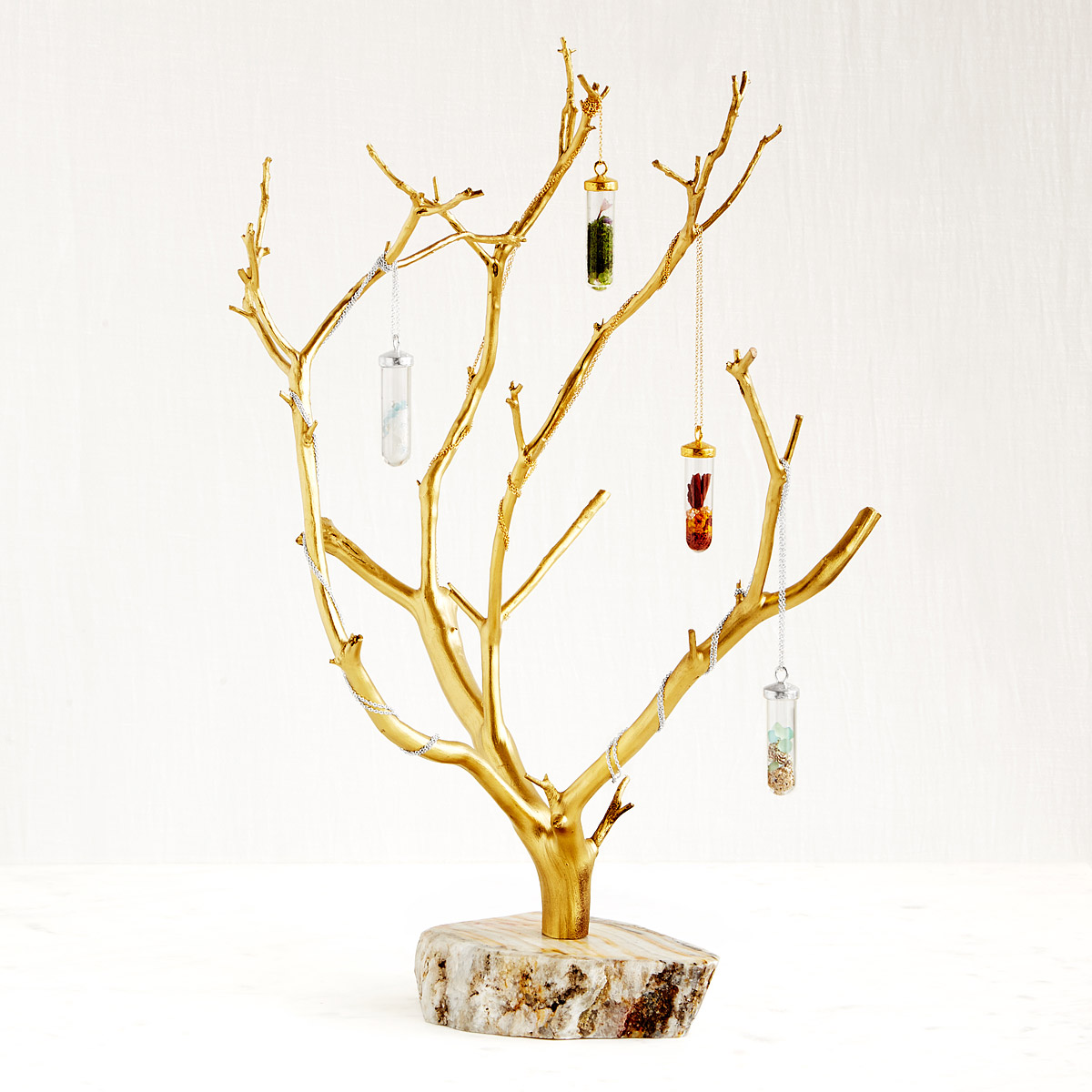 Gilded Branches Jewelry Tree | by Michale Dancer and Still Life for the Uncommon Collection
Gilded Branches Jewelry Tree | by Michale Dancer and Still Life for the Uncommon Collection
Can you talk a little bit about the responsible business practice piece of it – particularly the fair wage issue? You’ve been an advocate for that, and it’s one of the five factors for the Uncommon Collection.
It starts here, meaning that I don’t want to advocate that other people do things that we’re not willing to do or proud to do ourselves. From the beginning, UncommonGoods has paid meaningfully above the minimum wage, principally because: number one, we want to attract great people; number two, we want to treat people with dignity and respect, and paying people a fair wage is part of that. From a policy perspective, one of the often-overlooked elements of the minimum wage debate is the fact that when other businesses pay a wage that somebody cannot live on, our society has said “we need to give that individual help.” And so we as taxpayers are spending money on social support in the form of food stamps, in the form of housing assistance, and in other ways. That in effect is a transfer payment from us as taxpayers to the business that is paying the substandard wage. I don’t believe in that. I believe in fair competition and I don’t think it’s reasonable from a businessperson’s perspective that we should have to compete against another company that’s getting government assistance to support its workforce. I also don’t like it as an individual taxpayer. I also think that, as an individual, there’s a lot more dignity in getting the money from your employer for the work that you do than having to apply for food stamps or medical assistance or housing assistance.
It’s almost like some companies deny that connection—as soon as the person leaves work there’s no responsibility, they’re not making that connection between all of that public assistance and work life.
Right. People are not tools. People are not machines. The fact is that as a business, you can look at human beings as simply an item on your profit and loss statement. The problem is that we are brothers and sisters and I don’t think it’s healthy to compartmentalize your life and say “I’m a businessperson during the workday, and I’m a human being and I care about my community and my society outside of my work.” You’ve had folks in the past like the Carnegies and others who amassed tremendous wealth—and late in life perhaps felt tremendous guilt about how they went about achieving their financial gain, and then did these wonderful philanthropic things. My view is: run your business on a day-to-day basis in a way that has a positive impact on society and the environment, and then you don’t have to have a crisis of conscience when you’re older and wondering what your legacy is going to be.
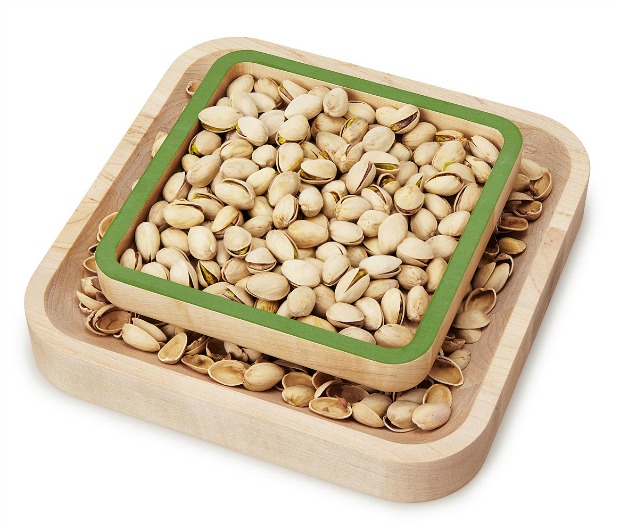 Pistachio Pedestal | Created by our Product Development team and J.K. Adams for the Uncommon Collection
Pistachio Pedestal | Created by our Product Development team and J.K. Adams for the Uncommon Collection
What other tenets of the Uncommon Collection have roots in the core values of UncommonGoods – in particular, in your original vision for the company?
If you think about other living things in the world, like a tree: What does a tree do? A tree provides shade. A tree gives many positive things. It takes and gives. And there’s some sort of question about what we as human beings give compared to what we take.
Does business inherently do good? Well, on one hand we’re a jobs program. We employ people. We provide health insurance. We provide opportunities for learning and personal development and growth. But there’s also a lot of damage that business does to the environment. So I think about how we are shipping packages to customers’ homes and that requires the use of a lot of natural resources. Some of the idea is “how can we do this in a way that has the minimal negative impact?” If we’re selling product, do we want to sell product that’s harmful to individuals or harmful to the planet? From day one we have not sold product that involves harming animals, and continue to do that. I think that’s a positive step. We also won’t sell anything, and haven’t for years, that has PVC or BPA—other harmful chemicals. That’s something that we promote pretty aggressively. We’ve gone further in the Uncommon Collection in terms of the materials standard and in terms of the packaging standard. We’re working with a handful of our suppliers who share that vision.
So it stands to reason that we’ll work with more and more suppliers whose practices are aligned with the standards that we provide?
I would say there are two ways to look at it. Do we want to work with more suppliers that have a positive impact and work to limit their negative impact? Absolutely. I would love it if our existing suppliers travel on the same journey that we’re on. I view this as climbing a mountain with lots of false peaks. Meaning you think you might be getting close to the top, but there is no top. It’s a very humbling exercise. The idea is that we want to keep working to get better and we have to draw the line somewhere. With the Uncommon Collection, this is the bar that we have to hold ourselves and our makers to—and we’re going to work to continue to raise that bar. We’re going to work with artists and makers to help get them over that bar. So I would say it’s less about finding new suppliers that share that vision and more about helping existing partners adopt more of these practices.
Designer Jayne Riew’s Meditation Box is featured in the Uncommon Collection.
What was the hardest thing about getting this project up and running?
Well, our Product Development team did the hardest work, but I think it’s extremely difficult to create commercially successful, brand reinforcing products. If you then layer on top of that the social responsibility standards you end up making it perhaps twice as difficult. It potentially increases the cost, and you potentially lose suppliers. So there are products that we’re offering that we designed and developed that we had hoped would be part of the collection, yet we couldn’t get our supplier to adopt or achieve all of the standards, despite our best efforts. So I would say that was the most difficult part. I think there’s an emotional element and as an independent business person, as an entrepreneur, the thing I like least is being told what to do. There’s an element of Big Brother in this that doesn’t sit totally right with me, where we might be perceived as telling our vendors how to run their businesses. As uncomfortable as that may be for me, I think that it’s an even more uncomfortable thing for some of our vendors. Articulating that this isn’t coercive—this is a voluntary program where we want to highlight those companies that we think are exhibiting best practices. I think that’s the most effective approach.
Were there other challenges?
The issue of transparency has been a big hurdle—we’re requiring that all participants, including UncommonGoods, disclose their environmental and people standards, including starting wages and benefits. We’ve been doing this since 2007 as part of our B Corporation certification, but it’s a new request for our suppliers. We think it’s essential to do this. Having to publicly state your policies makes it far easier to verify the statements.
A second challenge was that we have been basing most of our wage work on the MIT living wage calculator. There was recently an update to that which dramatically increased wages across the board. Apparently, that calculator had not been kept current and the most recent update ended up being much greater than we had anticipated, so we had to modify, but not eliminate, the wage standard that we used.
What do you hope the Uncommon Collection does for our brand and collection as a whole?
I think our main goal with this is to encourage more socially-responsible practices among our vendors. This program will be successful as we see more of our suppliers adopting or meeting the standards that we’re setting out. From a branding perspective, I’d like customers to see what we do behind the scenes. People don’t think about the fact that we’ve got a very sizeable chunk of space here in Brooklyn dedicated to warehousing and shipping products out to them with workers who are paid close to double the federal minimum wage. We could’ve chosen from the beginning to outsource our shipping, and most companies in our position have done that; and I think getting our customers to think a little bit more about the implications of where they shop and what they buy would be a hope for this program. Ultimately, the product’s got to look great, it’s got to be reasonably priced, and it’s got to be something they’re going to love or the recipient is going to love. To me, that’s number 1 through 9 in terms of importance, and number 10 would be “hey, is this product having a positive impact?” I think for many of our customers, that’s on the radar. For some of them, my hope is that this will get it on the radar.
Jewelry artist Catherine Weitzman’s My Lucky Stars Necklace , Four Season’s Necklaces, & Seasons Terrarium Necklaces are featured in the Uncommon Collection.
What about the Uncommon Collection’s focus on tabletop items and jewelry?
In the case of jewelry, I would say both the jewelry maker’s philosophy and the skill required to create the product lend themselves naturally to meeting these standards more easily. In the case of tabletop, our Product Development team—which is behind the Uncommon Collection—has spent many years focusing on this category and I think has great vendor relationships and a fairly high level of expertise around production and materials in that category. So I think that it’s more of a function of our history, and my hope is that we’ll see this expand to be represented throughout our assortment.
Where do you see this collection a year from now?
Ideally, I’d like to see it double in size, if not more, while not lowering the standards and hopefully gradually raising the standards.
What is your favorite item in the collection?
We’ve chosen to highlight the On The Other Hand Clock, and I think that’s a great combination of design, environmental sustainability, and a company that treats its people well. I also really like the ampersand Cheese & Crackers Board and the newest product form that partnership—the Pistachio Pedestal—as someone who happens to love both cheese and crackers and pistachios. I think that design is really clever, as is the Cheese & Crackers Board.
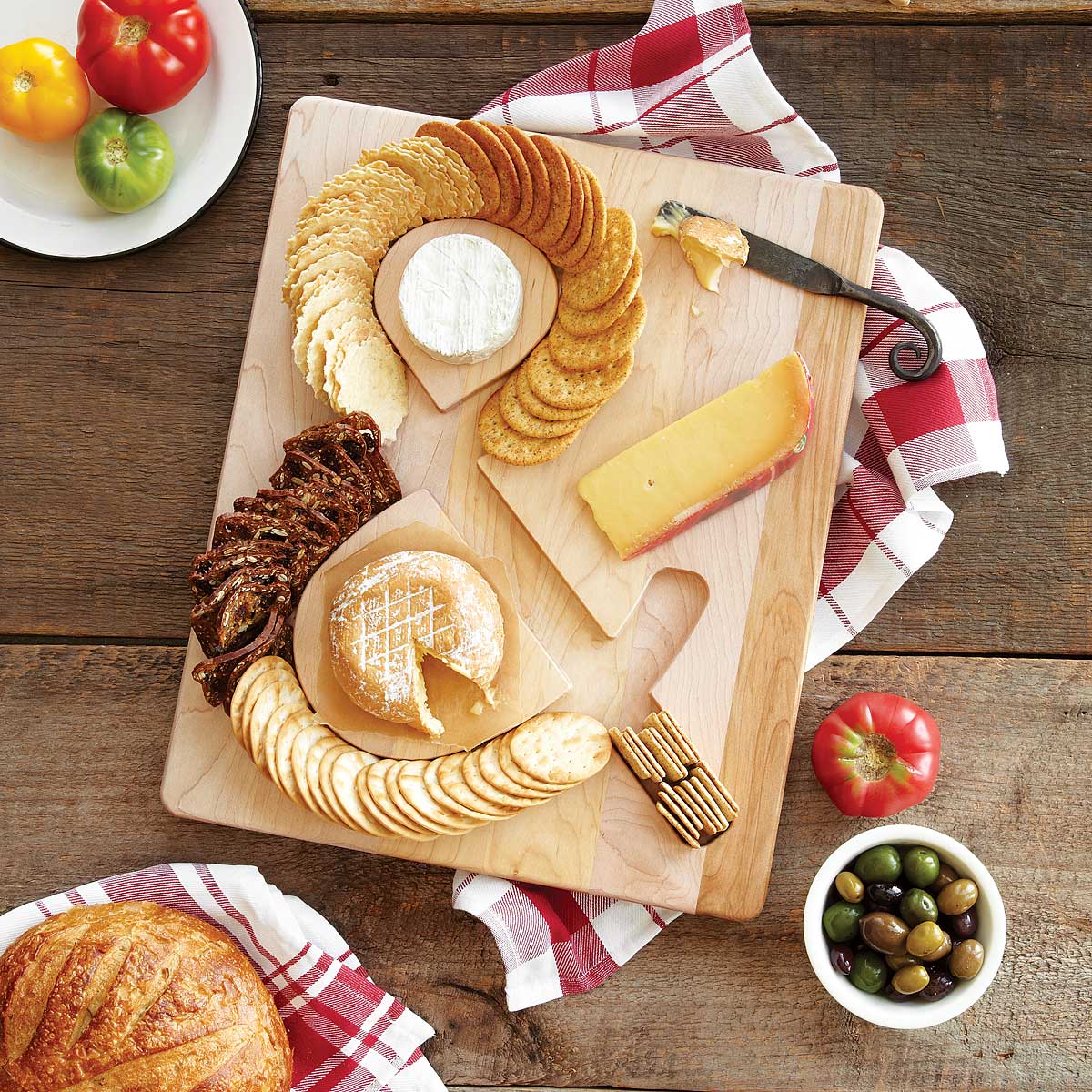 Cheese & Crackers Serving Board | Created by our Product Development team and J.K. Adams for the Uncommon Collection
Cheese & Crackers Serving Board | Created by our Product Development team and J.K. Adams for the Uncommon Collection
Anything else you want the customer to know about the collection?
I’d love to hear from our customers in terms of what they think about what we’re doing, any suggestions that they have, any other companies that they’ve seen who have ventured into something like this where we might find inspiration, and any other ideas that they might have. I’d also say I’d love to hear from our vendors, both existing and potential future parts of the collection.
Please tell us what you think of the Uncommon Collection by emailing feedback@uncommongoods.com.
It was interesting that at some point we were thinking about calling it ‘The Uncommon Brand’ and that changed to ‘Collection.’ Is that a good way of characterizing it?
Yes. We went back and forth quite a bit on the Uncommon Brand versus the Uncommon Collection, and it may seem like a very minor thing. But I would say that in our eyes, regarding the Uncommon Brand, when you think of a brand, you think of a singular aesthetic: a singular look and feel. Part of the charm of UncommonGoods has been that we’re a big design tent. We love modern design. We also love handmade products. And we felt that if we created it as a brand, it would be difficult and potentially confusing to have products with widely varying aesthetics living under that same roof. A collection felt more natural to us in that this is a standard. The product has to be well designed, yet it doesn’t have to be a particular design or look, but it does have to meet a certain set of criteria.
So ‘Collection’ allows it to be more eclectic.
Yes, more like UncommonGoods itself.
We invite you to browse the Collection and see how our focus on people and the planet—plus lots of exacting work with our suppliers behind the scenes—has produced an assortment of some of our most uncommon goods.



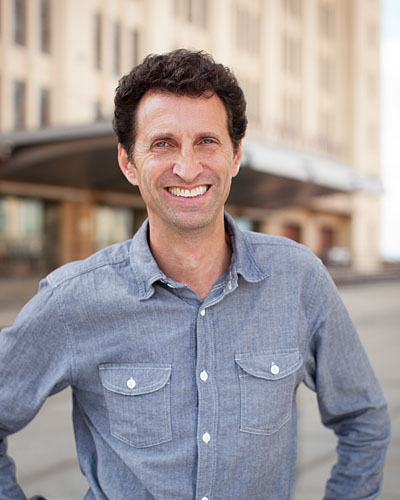
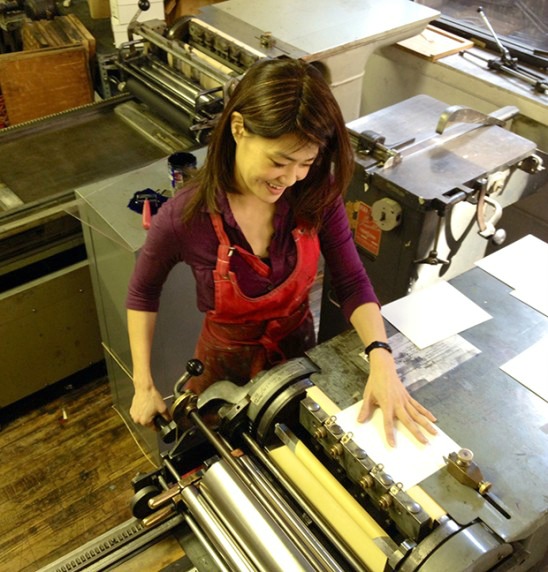


3 Comments
I am very happy to hear your stance on paying people a salary above minimum wage. As unions are wiped out across this country, I believe workers are going to see a steady decease in wages and benefits. I applaud your commitment to a fair working environment.
Congratulations! You are a fabulous and innovative company! I love everything about your business—from your business philosophy and your creative & intelligent products right down to the attention to detail in your packaging of shipments. I think you are doing it right! And you’re doing good! Thanks.
[…] those products and connecting our customer with the people who made them. We have grown a lot since introducing the Collection last year, both in terms of number of items and makers contributing to the Collection and in our […]